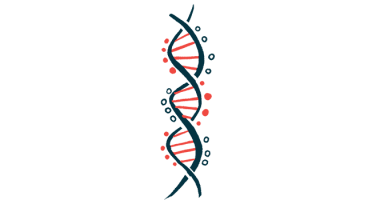Tiny DNA Deletion Including SNORD116 Gene Causes PWS-Like Disease, Case Study Shows

Loss of a region on chromosome 15 that involves the SNORD116 gene leads to the development of Prader-Willi syndrome (PWS)-like disease, suggesting that missing the gene is enough to cause the key characteristics of PWS, according to a case study.
The study, “Prader–Willi-Like Phenotype Caused by an Atypical 15q11.2 Microdeletion,” was published in the journal Genes.
PWS may affect several organ systems, and is present from birth. In infants, PWS manifests as lethargy, or lack of energy, and hypotonia (low muscle tone). that leads to a failure to thrive, which is followed in early childhood by excess weight gain and hyperphagia (excessive eating). Children with PWS may also be short, and may have delayed development, minor facial abnormalities, cognitive impairment, and behavioral and psychiatric disturbances.
The disorder is caused by loss of function of several paternal genes located on chromosome 15. In most cases, this is caused by a mutation that deletes (removes) large DNA sequences, but distinct features may result in rarer cases due to tiny (or micro) DNA deletions.
Researchers from Canadian universities and Levo Therapeutics described a 17-year-old boy who met six major clinical criteria for a diagnosis of PWS. He was born with significant hypotonia and impaired respiration, and resuscitated after birth. He was in the hospital’s neonatal intensive care unit for three weeks, and required tube feeding.
The boy had developmental delays, including in walking and talking, and had difficulty learning. Despite experiencing hyperphagia and excessive weight gain from age 3, he “did not often engage in food‐seeking behaviors,” the researchers said.
His body weight and body mass index (BMI) had been above the 97th percentile for his age since he was 4. Strict control of food access and calorie restriction stabilized BMI at 28.45 kg/m2 (overweight).
He had characteristic facial features of PWS, including a narrow skull, almond-shaped eyes, and a thin and downturned upper lip.
The boy was tall (1.81 meters, or 5.95 feet) without needing growth hormone therapy, “which is atypical for PWS,” the scientists wrote. He was referred to the clinic at age 15, when he had fully undergone puberty. In fact, his puberty’s start had been spontaneous, which is also unlike typical PWS patients, the researchers said.
Due to the presence of neonatal hypotonia, the patient underwent diagnostic testing to identify whether there were any abnormalities in the PWS-associated region of chromosome 15. However, no changes were seen.
Testing for other diseases, including spinal muscular atrophy and myotonic dystrophy type 1, were also negative. Neuromuscular workup between ages 12 and 13 was also normal.
The researchers conducted genetic sequencing, which identified a microdeletion in SNORD116. This alteration led to the loss of non-coding RNA molecules that have been implicated in PWS, or a PWS-like disease, they said.
To date, only six PWS cases have been found to be caused by small atypical deletions spanning the SNORD116 region.
“Our findings provide further evidence that deletion of the SNORD116 region is sufficient to cause the key characteristics of PWS, although some atypical features, including tall stature and spontaneous complete puberty, suggest that other genes in the region may make lesser phenotypic contributions,” the researchers said.






